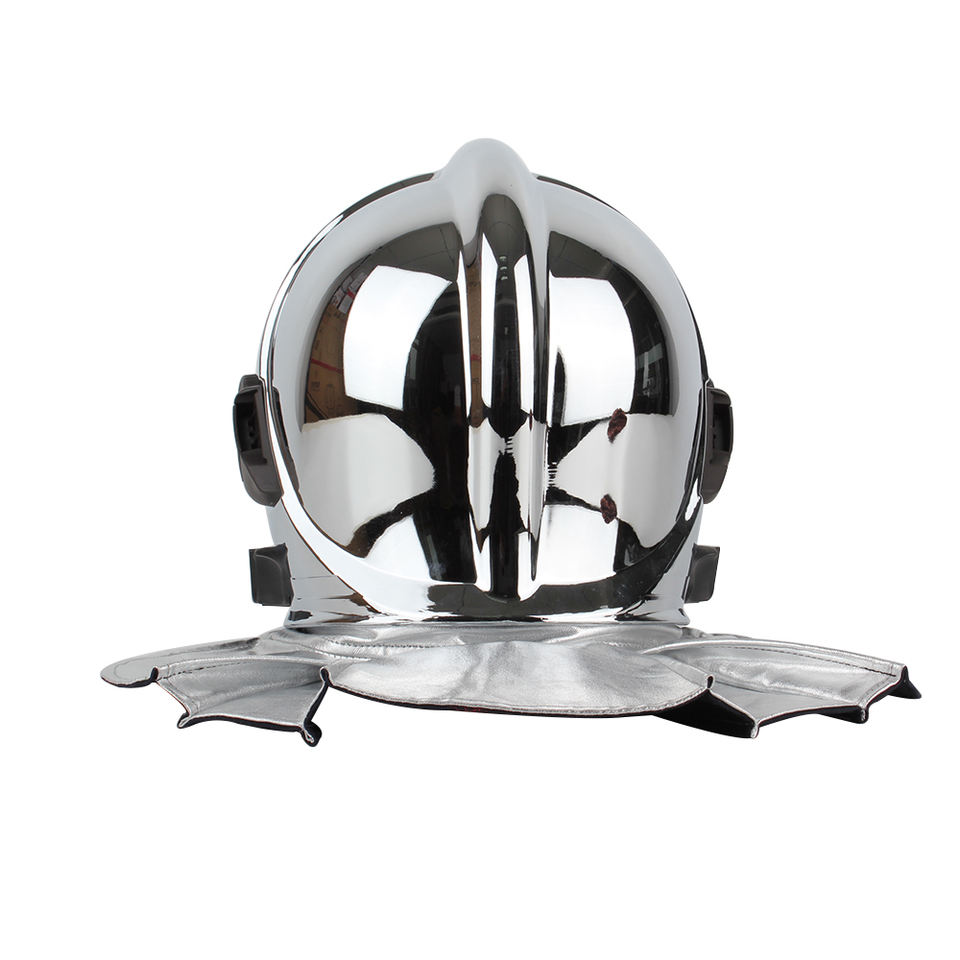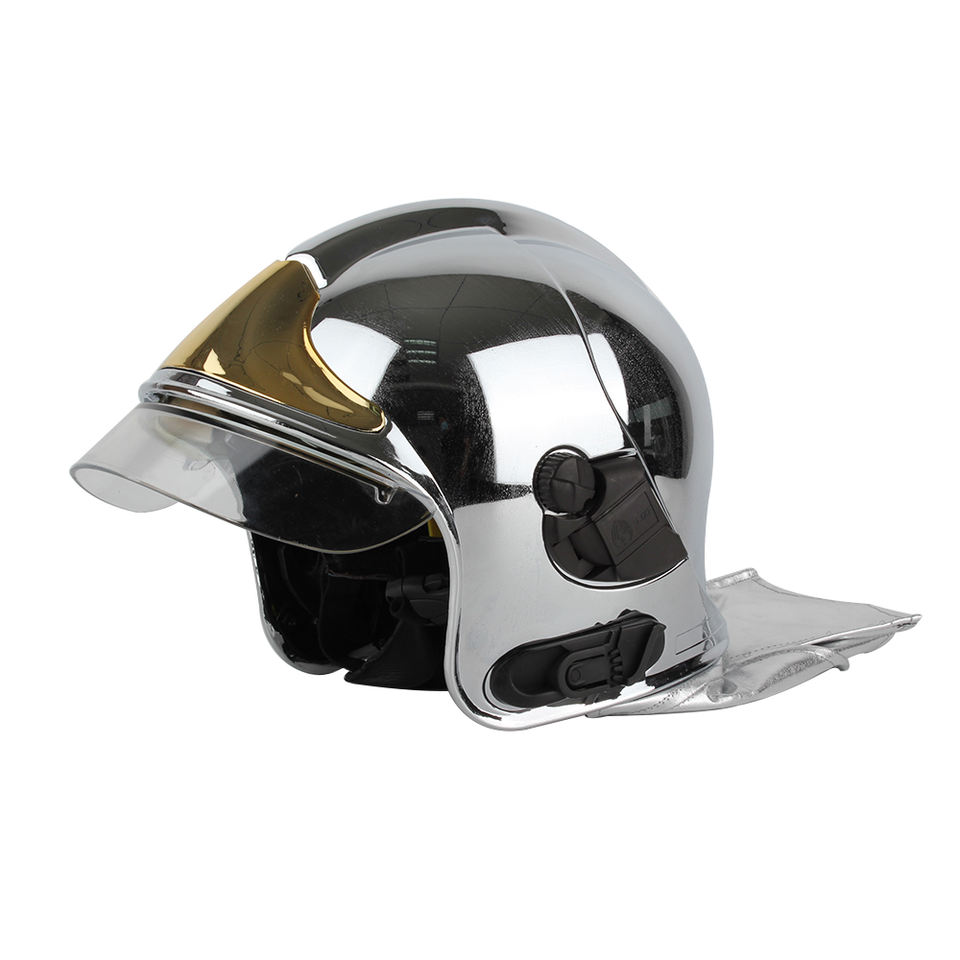Advanced Fire Safety Helmet - Premium Protection & Comfort | Buy Now
The Evolution of Firefighter Safety Headgear
In the demanding world of firefighting, personal protective equipment (PPE) is paramount, with the fire safety helmet being arguably the most recognizable component of a firefighter's gear. Modern firefighter safety helmet designs have evolved significantly from their historical counterparts, incorporating advanced materials and innovative technologies to offer unprecedented levels of protection. The global fire safety helmet market has experienced steady 4.8% annual growth (Fire Industry Association, 2023), driven by increasing safety regulations and technological innovations.



Today's premium fire safety helmet incorporates multi-layered protection systems exceeding basic EN443 standards. The outer shell typically features high-temperature resistant thermoplastics or composites that can withstand temperatures exceeding 600°F (315°C) for limited durations. Modern designs prioritize weight reduction without compromising protection, with many advanced helmets weighing under 3 pounds (1.36 kg). As one fire safety engineer commented in Fire Rescue Magazine, "The contemporary fire helmet isn't just protective headgear; it's a mobile command center integrating communication systems, thermal imaging, and vital monitoring technology."
About Hebei PuNuosen Safety Equipment Co., Ltd.
As a leading manufacturer in the safety equipment industry, Hebei PuNuosen Safety Equipment Co., Ltd. has specialized in advanced firefighter protection solutions for over 15 years. Our https://www.goodsafetyhelmet.com facility in Hebei, China produces premium helmets meeting European EN443 safety standards and CE certification requirements. We serve fire departments and emergency response teams across 37 countries with our technologically advanced safety solutions.
Technical Specifications of Modern Fire Helmets
| Parameter | Standard | Premium | Industrial |
|---|---|---|---|
| Material Composition | ABS Plastic | Thermally Modified Polymer Composite | Carbon Fiber Reinforced Polymer |
| Impact Resistance (Joules) | 100J | 150J | 200J |
| Heat Resistance | 250°C for 30 sec | 300°C for 60 sec | 350°C for 90 sec |
| Penetration Resistance | 5kg from 1m height | 10kg from 1.5m height | 15kg from 2m height |
| Electrical Insulation | 1,000V AC | 5,000V AC | 20,000V AC |
| Weight (grams) | 1,250g | 1,050g | 950g |
| Certification | EN443 Basic | EN443, CE Advanced | EN443, CE, NFPA |
| Safety Helmet Price Range | $65-$90 | $120-$180 | $220-$350 |
Global Market Trends and Technological Advancements
The fire safety equipment sector has witnessed considerable innovation in recent years, particularly in developing regions. China fire safety helmet manufacturing has grown remarkably, now representing over 45% of global production according to International Fire Industry Reports. This growth is attributed to significant investments in materials science and automated production technologies that maintain rigorous quality standards at competitive safety helmet price points.
"The integration of IoT technology into fire helmets represents the most significant protective advancement since the SCBA. Modern helmet sensors can detect toxic gases, monitor core body temperature, track personnel, and even signal when a firefighter becomes motionless—all critical enhancements to fireground safety." - Fire Engineering Technology Review 2023
EN443 & CE Certified Protection
Our fire safety helmet complies with the rigorous European EN443 standard, which involves comprehensive testing for flame resistance, impact protection, electrical insulation, and structural integrity under extreme conditions.
Advanced Features in Modern Fire Helmets
The contemporary fireman safety helmet incorporates numerous innovations beyond basic head protection. Advanced models include integrated thermal imaging cameras in the brim or face shield to identify hot spots through dense smoke. Communication systems have also evolved dramatically, with bone-conduction technology allowing clear communication even in extremely noisy environments exceeding 120dB. Other features include:
- Automated alert systems that deploy when a firefighter becomes motionless
- Integrated lighting systems with adjustable beam intensity
- HEPA-filtered airflow systems to reduce inhalation of toxic particles
- Vital sign monitoring with data transmission capabilities
- Augmented reality displays showing building layouts and escape routes
Manufacturing Excellence from China
Hebei PuNuosen Safety Equipment Co., Ltd. has established itself as a premier manufacturer of China fire safety helmet solutions. Located at 26 YongPing Road, Northern Industrial Base, Hengshui City, Hebei, our 12,000-square-meter facility employs ISO 9001:2015 certified manufacturing processes with robotic automation and computerized quality control stations ensuring consistent excellence. Our approach combines innovative materials science with ergonomic design principles.
Firefighter Safety Helmet Applications
Modern firefighter safety helmet technology extends beyond structural firefighting applications. The versatile protection systems serve multiple high-risk professions including:
Industrial Firefighting
Specialized helmets with enhanced chemical resistance and wider face shields are critical for petrochemical emergencies and industrial accidents.
Wildland Firefighting
Extended-use helmets with lightweight designs, enhanced airflow, and bright visibility colors specifically adapted for wildfire operations.
Technical Rescue Operations
Low-profile helmets with improved dexterity for confined space rescue operations requiring head mobility in tight quarters.
Hazardous Materials Response
Integrally sealed helmet systems that provide continuous head protection as part of total encapsulation suits.
Fire Safety Helmet Professional FAQ
A: The EN443 European standard for firefighters' helmets mandates several critical protections: (1) Resistance to flame penetration for at least 10 seconds at 600°C, (2) Impact absorption to withstand 250J of force, (3) Resistance to deformation under heat, (4) Electrical insulation up to 10,000V AC, and (5) Resistance to penetration by sharp objects.
A: Fire safety helmets require monthly visual inspections for damage and comprehensive annual testing. Helmets exposed to impact or extreme heat should be immediately retired. Industry standards recommend replacement every 5 years with regular use or after any significant impact.
A: Contemporary ABS helmets offer superior impact resistance, lighter weight (reduced neck strain), improved heat deflection, and advanced compatibility with modern accessory systems compared to traditional leather helmets. They also provide consistent structural integrity regardless of moisture conditions.
A: Premium face shields utilize multi-layer coating technologies: an anti-scratch outer layer, anti-fog inner coating, and optically corrected middle layer maintaining distortion-free vision. Gold coatings provide infrared reflection in extremely high-heat environments.
A: Price variations ($65-$350) reflect differences in: protective capabilities (impact/heat thresholds), materials (basic ABS to carbon composites), safety certifications, advanced features (HUD, communications), and customization. Our helmets provide EN443-certified protection at competitive safety helmet price points.
A: Advanced suspension systems distribute weight evenly, reducing neck fatigue during prolonged operations. They also create impact-absorbing space between the shell and head while maintaining ventilation. Our helmets feature customizable 6-point ratcheting systems with moisture-wicking pads.
A: Integrated TICs must maintain weight balance and not compromise impact protection. They require flame-resistant mounting points, heat-shielded electronics, and intuitive controls accessible while wearing fire gloves. Battery systems must meet hazardous location certifications.
Our Fire Protection Fighting Safety Helmet
At Hebei PuNuosen, our flagship Fire Protection Fighting Safety Helmet represents the culmination of extensive research and development. Engineered for maximum protection and operational efficiency, this model features:
- Material: High-performance ABS composite engineered for thermal stability
- Application: Designed specifically for firefighter personal protection
- Certification: CE approved under EN443 fire helmet standards
- Functionality: Full face protection with integrated accessory rails
- Customization: Available with custom logos (500+ pieces) and packaging
- Versatility: Compatibility with SCBA, communication systems, and night vision
"The remarkable technological progress in Chinese safety equipment manufacturing has significantly altered the global market landscape. Asian manufacturers like Hebei PuNuosen now account for nearly 45% of international safety equipment exports while maintaining strict compliance with European and North American certification standards." - Global Industrial Safety Report 2023
Industry Recognition and Future Developments
The fire safety equipment sector continues its technological evolution with several notable trends emerging. Material science advances are yielding nanocomposite materials that offer improved strength-to-weight ratios while enhancing thermal protection performance. These innovations enable the fire safety helmet to become lighter without compromising protection levels. Additionally, we're seeing significant growth in integrated electronics, with sensor packages becoming more sophisticated while reducing in size and power requirements.
Looking ahead, significant research is focused on developing smart helmets with augmented reality displays that provide real-time navigation and hazard information directly in the firefighter's field of view. Other emerging innovations include self-cooling systems using phase-change materials, advanced air filtration that automatically adapts to detected toxic compounds, and multi-spectral imaging that combines thermal with visual light amplification.
Industry References & Technical Citations
- Fire Equipment Manufacturers' Association (FEMA). (2023). Global PPE Standards Evolution Report. https://www.femasafe.org/standards
- International Fire Safety Journal. (2023). "Materials Science Advancements in Protective Equipment". Volume 12(3). https://www.ifsj.org/materials-safety
- European Safety Standards Committee. (2022). EN443:2022 Firefighter Head Protection Amendments. Brussels: ESSC Publications
- Industrial Fire Protection Quarterly. (2023). "Market Analysis: Asia-Pacific Fire Safety Equipment Manufacturing". Issue 45. https://ifpq.net/asia-market
- National Fire Protection Research Foundation. (2023). Firefighter Injury Prevention: Head Protection Systems. NFPRF Technical Report #2023-17
-
Women's Safety Clothing Canada | Hi-Vis & Durable Gear
NewsAug.27,2025
-
Durable Safety Helmet Hats: Ultimate Head Protection & Comfort
NewsAug.26,2025
-
HDPE Safety Helmet: Durable Head Protection for Work Sites
NewsAug.25,2025
-
Stylish Baseball Cap Safety Helmet | Discreet Head Protection
NewsAug.24,2025
-
Durable Waterproof Safety Clothing | Custom & High-Vis Protection
NewsAug.23,2025
-
Premium Reflective Safety Clothing | High-Vis Workwear
NewsAug.22,2025
